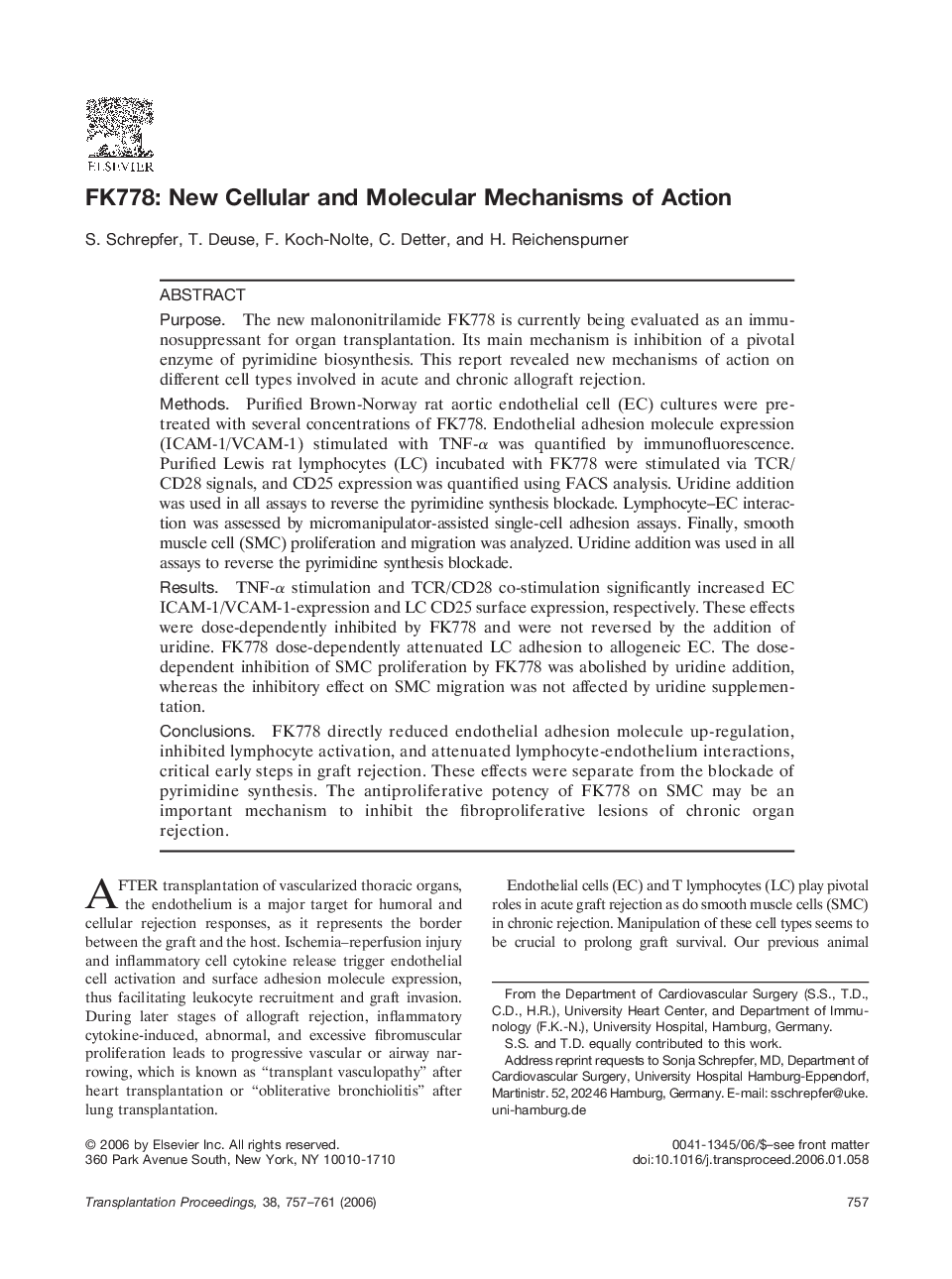| Article ID | Journal | Published Year | Pages | File Type |
|---|---|---|---|---|
| 4263005 | Transplantation Proceedings | 2006 | 5 Pages |
PurposeThe new malononitrilamide FK778 is currently being evaluated as an immunosuppressant for organ transplantation. Its main mechanism is inhibition of a pivotal enzyme of pyrimidine biosynthesis. This report revealed new mechanisms of action on different cell types involved in acute and chronic allograft rejection.MethodsPurified Brown-Norway rat aortic endothelial cell (EC) cultures were pretreated with several concentrations of FK778. Endothelial adhesion molecule expression (ICAM-1/VCAM-1) stimulated with TNF-α was quantified by immunofluorescence. Purified Lewis rat lymphocytes (LC) incubated with FK778 were stimulated via TCR/CD28 signals, and CD25 expression was quantified using FACS analysis. Uridine addition was used in all assays to reverse the pyrimidine synthesis blockade. Lymphocyte–EC interaction was assessed by micromanipulator-assisted single-cell adhesion assays. Finally, smooth muscle cell (SMC) proliferation and migration was analyzed. Uridine addition was used in all assays to reverse the pyrimidine synthesis blockade.ResultsTNF-α stimulation and TCR/CD28 co-stimulation significantly increased EC ICAM-1/VCAM-1-expression and LC CD25 surface expression, respectively. These effects were dose-dependently inhibited by FK778 and were not reversed by the addition of uridine. FK778 dose-dependently attenuated LC adhesion to allogeneic EC. The dose-dependent inhibition of SMC proliferation by FK778 was abolished by uridine addition, whereas the inhibitory effect on SMC migration was not affected by uridine supplementation.ConclusionsFK778 directly reduced endothelial adhesion molecule up-regulation, inhibited lymphocyte activation, and attenuated lymphocyte-endothelium interactions, critical early steps in graft rejection. These effects were separate from the blockade of pyrimidine synthesis. The antiproliferative potency of FK778 on SMC may be an important mechanism to inhibit the fibroproliferative lesions of chronic organ rejection.
